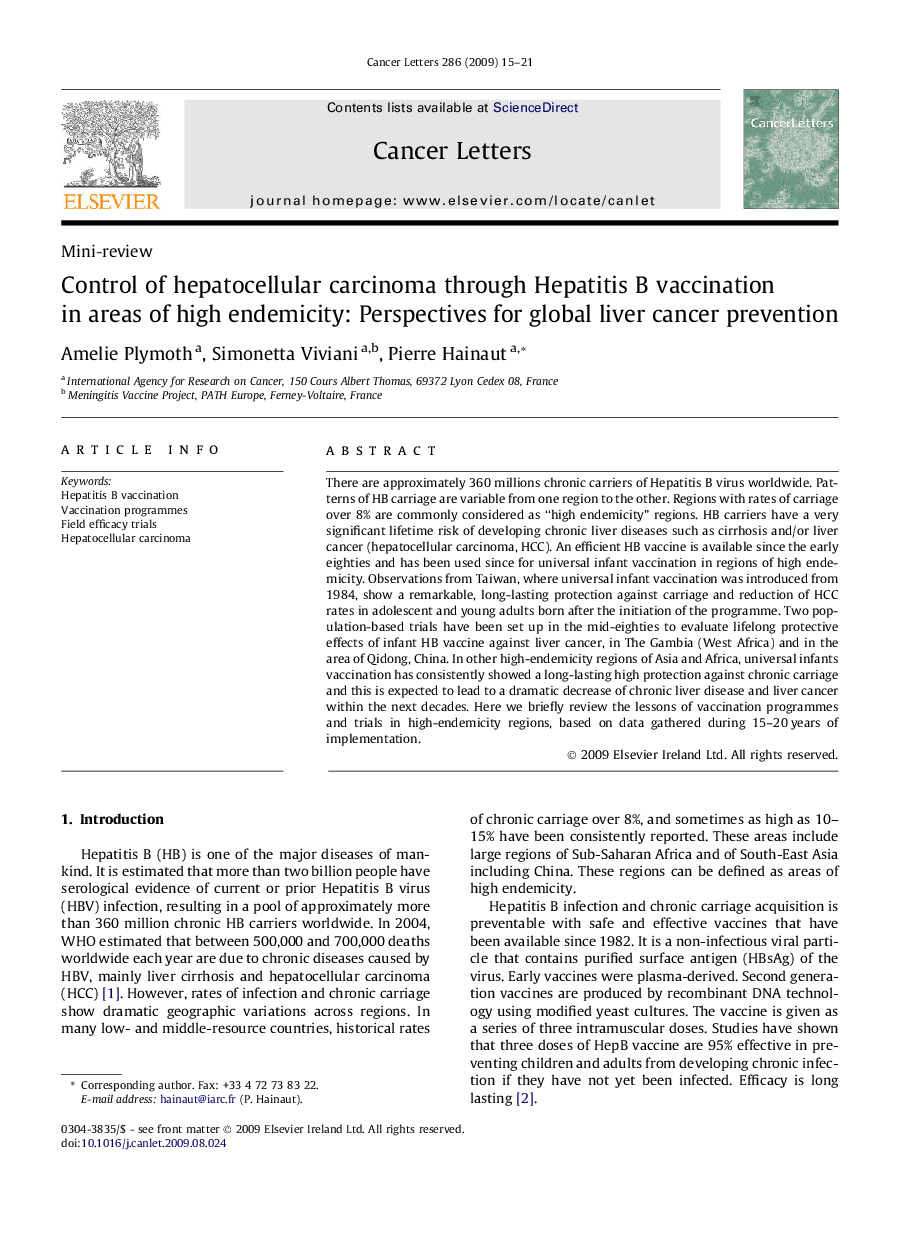| Article ID | Journal | Published Year | Pages | File Type |
|---|---|---|---|---|
| 2114205 | Cancer Letters | 2009 | 7 Pages |
There are approximately 360 millions chronic carriers of Hepatitis B virus worldwide. Patterns of HB carriage are variable from one region to the other. Regions with rates of carriage over 8% are commonly considered as “high endemicity” regions. HB carriers have a very significant lifetime risk of developing chronic liver diseases such as cirrhosis and/or liver cancer (hepatocellular carcinoma, HCC). An efficient HB vaccine is available since the early eighties and has been used since for universal infant vaccination in regions of high endemicity. Observations from Taiwan, where universal infant vaccination was introduced from 1984, show a remarkable, long-lasting protection against carriage and reduction of HCC rates in adolescent and young adults born after the initiation of the programme. Two population-based trials have been set up in the mid-eighties to evaluate lifelong protective effects of infant HB vaccine against liver cancer, in The Gambia (West Africa) and in the area of Qidong, China. In other high-endemicity regions of Asia and Africa, universal infants vaccination has consistently showed a long-lasting high protection against chronic carriage and this is expected to lead to a dramatic decrease of chronic liver disease and liver cancer within the next decades. Here we briefly review the lessons of vaccination programmes and trials in high-endemicity regions, based on data gathered during 15–20 years of implementation.
